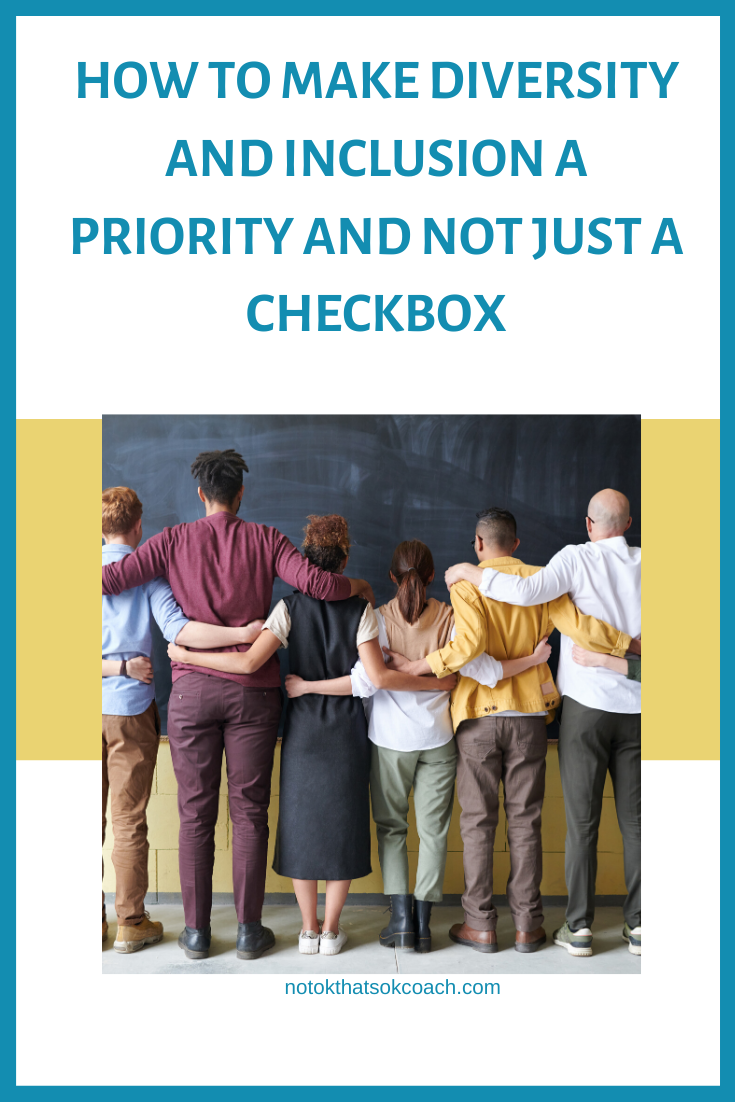Diversity and inclusion initiatives have ramped up over the last few weeks, but how can we ensure that these are not fleeting efforts? That these inquiries, requests and interests are part of permanent, organization-wide changes and not a temporary reaction to avoid scrutiny in the current climate?
Research shows that 57% of employees want their organization to improve diversity amongst their workforce. They want to be included and work for a place where they are part of the decisions being made. But how do leaders make the shift from checking a box on their programming list to creating real behavioral and cultural change?
Here are a few ways to demonstrate long-term commitment to diversity and inclusion while acknowledging the difficulty to make systemic change.
Openly share diversity growth strategy
If your organization has a stance, resources to provide employees, and a diversity growth strategy; share that on your website, internal messaging with employees, and on social channels. Have managers share this information during virtual staff meetings and one-on-one conversations.
Diverse employees need to know that you have their best interests in mind. This involves fair consideration during hiring, promotion, inclusion in important decisions, and protection if impacted by outright racism or unconscious bias. This goes beyond creating a policy and involves ongoing conversation, training, and diligent attention to employees’ needs. Openly share the organization’s plans to grow your diverse workforce.
Make a long-term commitment to education and conversation
Even with research showing that diverse teams are 87% better at making decisions and 70% more likely to capture new markets; the diversity and inclusion budgets can be one of the first cuts in lieu of other priorities.
A one-off training or seminar has good intentions, but does not make a long-lasting impact. Even if your organization brings in a top facilitator and the employees have transformation moments, they are just moments. There needs to be a space where employees can consistently have conversations about diversity. This can also involve monthly events for the organization as a whole, book clubs with diverse authors, and “Ask Me Anything” sessions.
Align your organization with clients with a similar mission
Goldman Sachs recently made the commitment to not take a company public unless they have a diverse board member. This bold move shows how important diversity is to their mission and who they want to work with. Reflect on your current client base and get a better understanding of their values and how you can help push their diversity mission forward beyond your organization.
Provide opportunities for sponsorship
It is hard for employees to see that there is a future for them in an organization if there are not people that look like them at the top. Creating formal or informal opportunities for employees to advocate for others and their progression within an organization is extremely valuable. According to a report by Deloitte, sponsorship can even lead to stretch assignments, additional promotions, and pay raises by up to 30 percent.
Be aware of representative leadership
It is important to be aware of who is represented during meetings, conference calls, and conversations. Studies show that 13% of employees monitor how much time is spent discussing diversity at management level. As we are all trying to navigate how to move forward and proceed, making a conscious effort to bring in people with diverse experiences and backgrounds will help your team and organization thrive. Before making a big decision or sending out a meeting invitation, consider having:
- Cross-department representation
- Individuals of diverse races, ethnicities, and genders
- Employees in various levels and tenure within the organization
- People who challenge the status quo
And while leading these conversations,
- Consistently and equally introduce employees (i.e. employee’s name and position)
- Resist the urge to generalize. Employees with similar experiences or knowledge may think differently so it’s important to provide them a space to do so
- Openly ask for opposing views and suggestions
Highlight Black, Indigenous and People of Color (BIPOC)
Many organizations highlight employees on their social channels and share why they like to work there, where they see their future in the organization and how they got their start. If your organization is already sharing this information, ensure that you are sharing diverse voices and stories. If you have not yet done this, make an effort to share diverse perspectives and feature BIPOC employees.
Be conscious of your financial contributions and social impact initiatives
Reflect on what causes your organization is donating to and what companies you purchase products from. Notice if they are supporting BIPOC and other underrepresented populations. Then consider choosing a different organization each month and/or adjusting supplier lists. Keep in mind, while donating can show a commitment, it is not the be all, end all. Action needs to be taken within the organization as well and this is not a substitute for making internal change.
Explore access to community and partnerships
Employee resource groups (ERG) may not be considered a priority in workload and funding. But these groups provide support, education, and ongoing professional development to underrepresented communities and educate the organization as a whole. Some of these groups focus on:
- Professional and industries (i.e. sales and marketing, engineering)
- Attributes (i.e. generation, LGBTQA+, gender, veteran)
- Social-cause issues and concerns (i.e. sustainability and the environment)
- Neurodiversity (i.e. ADHD, Asperger’s, Dyslexia)
And according to Bloomberg, they also provide employees the “opportunity to problem-solve, innovate, develop and showcase their leadership skills, regardless of seniority or managerial status in their day job.” These communities can also help to alleviate employee fears and build much needed workplace relationships.
So, while funding might be tight, it’s important to give employees some space and time to still hold meetings, virtual trainings, and ongoing conversations within these organizations. If you are not sure what they need, ask.
While diversity and inclusion may not have always been top of mind, it should be now and moving forward. Among the potential to increase profits, employees want to work for organizations who put it at the forefront. And high performing employees even leave because these elements are not being taken seriously.
- Cultivating Relationships - July 20, 2021
- Empowering Our People - July 13, 2021
- Finding Purpose - July 6, 2021




